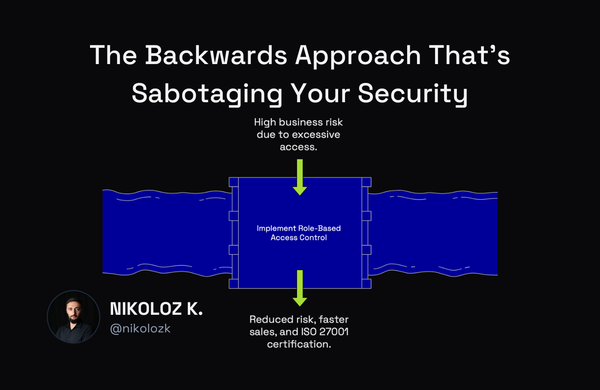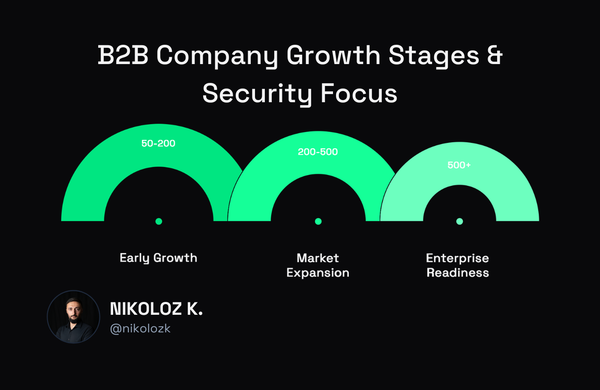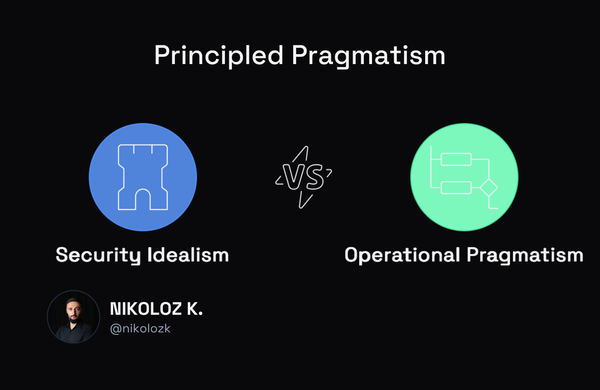3 Critical Steps to Build an Intelligence-Led SOC

Nikoloz Kokhreidze
Learn how to transform your Security Operations Center from reactive to proactive. Discover key strategies to overcome common challenges and build an intelligence-led SOC.

\As a cybersecurity strategist, I've seen firsthand the evolution of security operations centers (SOCs). We've moved from reactive, alert-driven models to more proactive and intelligence-led approaches. This shift is essential in today's threat landscape, but I often hear from fellow security leaders who struggle to make it happen.
So, what does "intelligence-led" really mean?
It's about building a SOC that anticipates threats instead of just reacting to them. It means using threat intelligence to make informed decisions about resource allocation, technology investments, and security posture.
The benefits are clear: a more proactive stance, faster and more effective incident response, and better protection for your organization's critical assets.
The Struggle is Real
Unfortunately, building this type of SOC is easier said than done. Many organizations struggle to translate the concept into a practical reality.
Why? Here are a few reasons.
One of the primary issues is the overwhelming volume of threats, vulnerabilities, and security alerts that SOCs must handle. This can lead to a reactive approach, where teams focus on the latest high-profile attacks rather than prioritizing the most relevant threats to their organization. To overcome this, it's essential to develop a clear strategy that aligns with the company's overall business goals and provides a roadmap for investing in the right tools, processes, and skill sets.
Another common challenge is the lack of integration between disparate security tools. Many SOCs rely on a patchwork of systems that don't communicate effectively, creating data silos and hindering visibility. This fragmentation slows down threat detection and response, making it harder for analysts to get a comprehensive view of their security posture.
Staffing is also a significant hurdle for many organizations. The shortage of skilled security professionals makes it difficult to find and retain the talent needed to effectively operationalize an intelligence-led approach. This can lead to overburdened analysts and a lack of expertise in key areas.
In addition to staffing challenges, many SOCs still rely heavily on manual processes, which are time-consuming and prone to error. This can result in alert fatigue and reduced efficiency. To address this, organizations must embrace automation to streamline repetitive tasks and free up analysts to focus on higher-level responsibilities, such as threat hunting and incident response. Despite these challenges, building an effective, intelligence-led SOC is within reach.
Nevertheless, I want to assure you that building an effective, intelligence-led SOC is achievable. It requires a shift in mindset, a clear strategy, and a commitment to continuous improvement.
Here's a step-by-step guide to get you started:
Is Security Blocking Your Next Enterprise Deal?
Let's discuss how fractional CISO services can unlock your pipeline without the full-time overhead.
Step 1: Define Your Threat Model and Prioritize Your Defenses
Start by understanding the threats that matter most to your organization. Conduct a thorough threat assessment, considering your industry, data assets, and existing security posture.
When conducting your threat assessment, keep in mind that not all threats are created equal. You need to focus your limited resources on defending against the threats that are most likely to materialize and have the biggest impact on your business.
To illustrate this point, consider the following example: A financial institution might prioritize threats related to financial fraud, data breaches, and ransomware attacks, while a healthcare organization might focus on protecting patient data from unauthorized access and disclosure.
Step 2: Embrace Threat Intelligence as Your Guide
Integrate threat intelligence into every aspect of your SOC operations. Use it to inform your threat model, prioritize alerts, guide incident investigations, and proactively hunt for threats.
Threat intelligence provides the context and insights you need to make informed decisions about your security posture. It helps you stay ahead of emerging threats and adapt your defenses as needed.
However, organizations often make the following mistakes when implementing threat intelligence:
- Relying Solely on Open-Source Intelligence: While valuable, open-source intelligence should be supplemented with commercial or industry-specific feeds to get a more comprehensive view of the threat landscape.
- Treating Threat Intelligence as a "Set It and Forget It" Solution: Threat intelligence is dynamic and constantly evolving. You need to continuously monitor and update your feeds to ensure you're getting the most up-to-date information.
To avoid these pitfalls and effectively leverage threat intelligence, consider the following best practices:
- Invest in a Threat Intelligence Platform (TIP): A TIP can help you aggregate, analyze, and operationalize threat intelligence from multiple sources.
- Develop Relationships with Threat Intelligence Vendors and Communities: Sharing information and best practices can help you stay ahead of the curve.
- Establish Processes for Evaluating and Validating Threat Intelligence: Not all intelligence is accurate or relevant. You need to have a system for filtering and prioritizing the information you receive.
Is Security Blocking Your Next Enterprise Deal?
Let's discuss how fractional CISO services can unlock your pipeline without the full-time overhead.
Step 3: Automate and Orchestrate for Efficiency and Scale
Embrace automation to streamline repetitive tasks, accelerate incident response, and free up analysts to focus on higher-level activities. Automation is essential for improving SOC efficiency, reducing alert fatigue, and enabling your team to handle the increasing volume and complexity of security threats.
To identify tasks that can be automated, consider the following examples:
Alert Triage and Enrichment: Automating the process of gathering additional context about an alert (e.g., IP reputation, user activity, geolocation) can save analysts valuable time.
Incident Response Playbooks: Creating automated workflows for common incident types can help you respond to threats faster and more consistently.
Threat Hunting: Automating data analysis and correlation can help you proactively identify threats that might otherwise go undetected. By automating these tasks, SOCs can experience several significant benefits.
Automation comes with great benefits. By automating routine tasks, analysts can focus on more strategic and impactful work. Moreover, automated workflows can help you contain threats faster and minimize damage to your organization by enabling quick detection and response. Proactive threat hunting is another advantage of automation. It allows you to identify and mitigate threats before they can cause harm, further enhancing your organization's security posture.
Conclusion
By taking these steps, you can move towards a more mature and effective security operations model.
Remember that building an intelligence-led SOC is an ongoing journey, not a destination.
You'll need to continuously adapt your processes, technologies, and skill sets to stay ahead of the curve. However, with a clear vision and a commitment to continuous improvement, you can build a SOC that is truly equipped to protect your organization from the ever-evolving threat landscape.
Before you go
If you found this article useful, I'd really appreciate if you could forward it to your community and share your feedback below!
For more frequent cybersecurity leadership insights and tips, follow me on LinkedIn, BlueSky and Mastodon.
Best,
Nikoloz
Grab your FREE checklist below.



